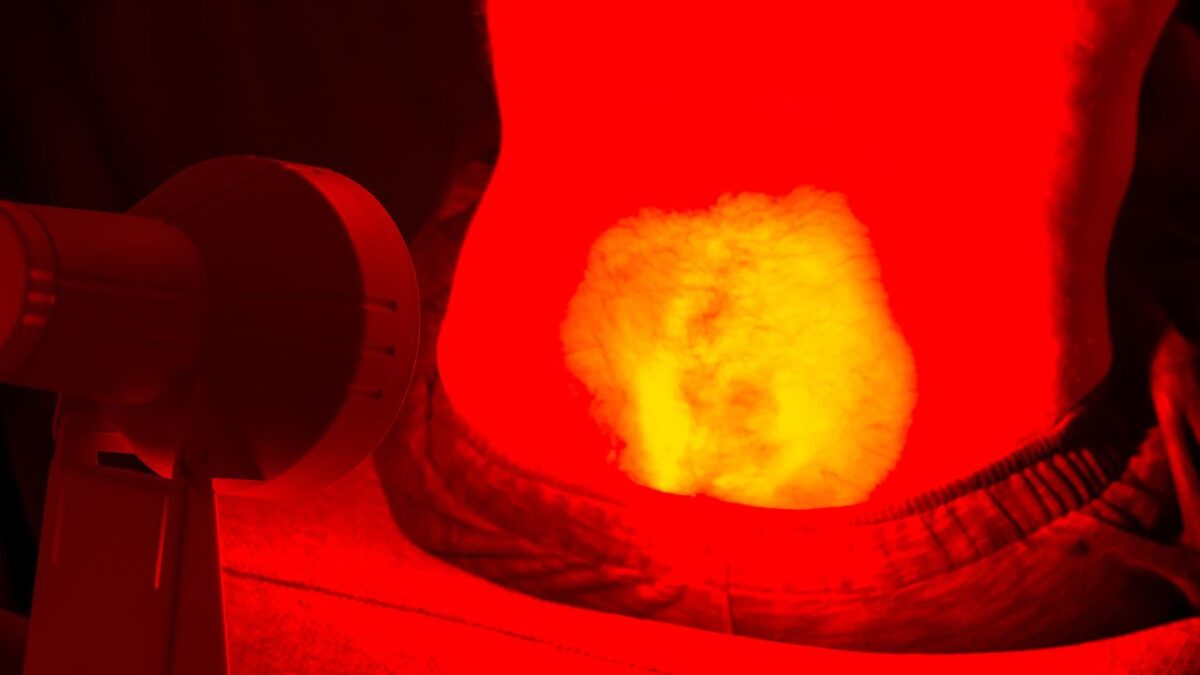Can Near-Infrared Light Therapy Help with Menopausal Joint and Muscle Pain?

Why Your Joints and Muscles Might Be Aching
Menopause comes with plenty of well-known symptoms—hot flashes, mood swings, and brain fog, to name a few. But what about those mysterious aches and pains in your joints and muscles? If you’re feeling stiff and sore for no apparent reason, you’re not imagining things. Declining estrogen levels can lead to increased inflammation, decreased collagen production, and slower muscle recovery.
While hormone replacement therapy (HRT) and medications are common treatments, many women are looking for natural ways to ease the discomfort. One intriguing option? Near-infrared (NIR) light therapy.
What Is Near-Infrared Light Therapy?
Near-infrared light therapy uses low-level light in the near-infrared spectrum to penetrate deep into body tissues. Unlike UV rays from the sun (which can damage skin), NIR light is known for its ability to stimulate cellular repair, reduce inflammation, and improve circulation.
This type of therapy is already used in sports medicine, physical therapy, and even skincare. Now, researchers are exploring how it might help women dealing with menopause-related joint and muscle pain.
How Can NIR Light Therapy Help with Menopausal Pain?
During menopause, the body undergoes changes that can make muscles and joints more prone to stiffness and discomfort. Here’s how NIR light therapy might help:
- Reduces Inflammation – Some studies suggest that NIR light stimulates cellular activity that lowers inflammatory markers, which could mean less joint pain.
- Boosts Circulation – Better blood flow delivers more oxygen and nutrients to sore muscles and joints, potentially speeding up healing.
- Supports Collagen Production – Collagen is essential for healthy joints and connective tissues. Since estrogen decline affects collagen levels, NIR therapy may help maintain joint strength.
Potential Benefits of NIR Light Therapy
If you’re looking for a non-invasive and natural way to manage menopausal aches, NIR light therapy has some promising perks:
- No Needles, No Surgery – It’s a painless therapy that doesn’t require medication.
- May Enhance Natural Healing – Stimulates the body’s own repair mechanisms.
- Minimal Side Effects – Generally considered safe, with few reported risks.
That said, more research is needed to fully understand its effectiveness, especially for menopause-related pain.
Other Natural Ways to Ease Menopausal Aches
NIR light therapy is just one tool in the toolbox. Here are other natural approaches that might help:
- Stay Active: Gentle exercises like yoga, swimming, and walking can improve flexibility and reduce stiffness.
- Eat Anti-Inflammatory Foods: Omega-3-rich foods (like salmon, walnuts, and flaxseeds) may help lower inflammation.
- Try Mind-Body Practices: Meditation, acupuncture, and deep breathing exercises can support relaxation and pain management.
Should You Try It?
If you’re curious about NIR light therapy, talk to your doctor first—especially if you have underlying health conditions. While it’s a promising natural option, it’s always best to get professional guidance before starting any new treatment.
Menopause may bring its fair share of discomfort, but innovative therapies like near-infrared light might offer a drug-free way to support healing and pain relief.
Disclaimer: The information provided in this article is for educational purposes only and is not intended as medical advice. Always consult with a qualified healthcare professional before starting any new treatment or therapy.
Other References
- Hamblin, M. R. (2017). “Mechanisms and applications of the anti-inflammatory effects of photobiomodulation.” AIMS Biophysics, 4(3), 337–361.
- Overview: This study explores how near-infrared light therapy, also known as photobiomodulation, can reduce inflammation by affecting cellular processes. The anti-inflammatory effects may alleviate joint and muscle pain associated with menopause.
- Link to Article
- de Morais, N. C., et al. (2019). “Effects of low-level laser therapy on pain and inflammation due to temporomandibular disorders: A double-blind, randomized, placebo-controlled trial.” Journal of Photochemistry and Photobiology B: Biology, 201, 111624.
- Overview: This clinical trial demonstrates the analgesic and anti-inflammatory effects of near-infrared light therapy on musculoskeletal pain, which can be extrapolated to menopausal joint discomfort.
- Link to Article
- Liang, J., Liu, L., & Xing, D. (2012). “Photobiomodulation by low-power laser irradiation attenuates Aβ-induced cell apoptosis through the Akt/GSK3β/β-catenin pathway.” Free Radical Biology and Medicine, 53(7), 1459–1467.
- Overview: Although focused on neural cells, this study suggests that near-infrared light therapy can promote cell survival pathways, which might be beneficial in reducing menopausal symptoms linked to cell apoptosis.
- Link to Article
- Giuliani, A., et al. (2019). “Low infra red laser light irradiation on cultured neural cells: effects on mitochondria and cell viability after oxidative stress.” BMC Complementary and Alternative Medicine, 9, 8.
- Overview: This research investigates how near-infrared light therapy enhances mitochondrial function and reduces oxidative stress, factors that are significant in menopausal symptom management.
- Link to Article
- Tafur, J. & Mills, P. J. (2008). “Low-intensity light therapy: exploring the role of redox mechanisms.” Photomedicine and Laser Surgery, 26(4), 323–328.
- Overview: This article reviews how near-infrared light therapy can modulate oxidative stress and inflammatory responses, potentially relieving menopausal pain.
- Link to Article
